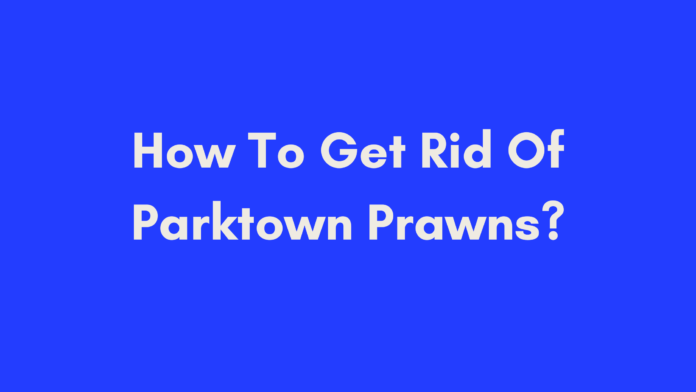Quick Summary
Parktown prawns are large, invasive insects native to South Africa that can cause significant damage to gardens and farms. To effectively get rid of Parktown prawns, you can use a combination of chemical pesticides, natural predators, and physical removal methods. Additionally, implementing habitat management and environmental adjustments will help prevent future infestations. By taking a proactive and multi-faceted approach, you can protect your plants and maintain a healthy growing environment.
Introduction
Parktown prawns are an unwelcome visitor in many gardens and farms across South Africa. These large, invasive insects, also known as giant black crickets, can cause significant damage to your plants and crops if left unchecked. In this comprehensive guide, we will explore what Parktown prawns are, why they pose a problem, and effective methods for getting rid of them. By understanding their behavior and implementing the right strategies, you can protect your garden and maintain a healthy, thriving environment.
What Are Parktown Prawns?
Overview and Origin
Parktown prawns, despite their misleading name, are not actually prawns but rather a type of large cricket. Native to South Africa, these insects were first identified in Johannesburg, leading to their distinctive name. They are part of the Gryllidae family, which includes various cricket species.
Key Facts:
- Scientific Name: Libanasidus vittatus
- Common Names: Giant black cricket, Parktown prawn
- Native Region: South Africa, particularly Johannesburg
Physical Characteristics
Parktown prawns are easily recognizable due to their impressive size and distinct coloration. They can grow up to 8 cm (about 3 inches) in length. Their bodies are primarily dark brown with striking reddish-orange legs, which helps them stand out against vegetation.
Physical Features:
- Body Length: Up to 8 cm
- Color: Dark brown shell, reddish-orange legs
- Wings: Non-functional; they cannot fly
In comparison to other insects, Parktown prawns are notably larger and more robust. This size contributes to their status as a formidable pest.
Behavior and Feeding Habits
Parktown prawns are primarily nocturnal, meaning they are most active during the night. They feed on a wide range of vegetation, including grass, leaves, and crops. Their feeding habits can cause significant damage, particularly in gardens and agricultural areas.
Feeding Preferences:
- Vegetation: Grass, leaves, and crops
- Damage Potential: Can strip plants of their foliage and stunt growth
These insects can be particularly problematic due to their feeding patterns, which can quickly lead to extensive damage if not managed properly.
Why Are Parktown Prawns Problematic?
Impact on Gardens and Farms
Parktown prawns can wreak havoc on gardens and farms. Their feeding habits can lead to severe damage, including defoliation of plants and reduction in crop yields. This can be particularly concerning for farmers and gardeners who rely on healthy plants for their livelihood.
Examples of Damage:
- Gardens: Chewed leaves and stunted plant growth
- Crops: Reduced yields and poor quality produce
Challenges in Control and Management
Controlling Parktown prawns can be challenging due to their large size and rapid reproduction. Each female can lay hundreds of eggs, which hatch into larvae within a few weeks. This rapid lifecycle means that infestations can quickly escalate if not addressed promptly.
Control Challenges:
- Size: Difficult to manage manually
- Reproduction: High reproductive rate leading to fast population growth
Health and Safety Concerns
While Parktown prawns are not known to transmit diseases, their presence can cause discomfort and potential allergic reactions in some individuals. Their large size and the noise they produce can also be unsettling, particularly in residential areas.
Health Considerations:
- Allergic Reactions: Potential for skin irritation or allergies
- Noise: The chirping noise can be bothersome to some people
By understanding the extent of the problems caused by Parktown prawns, you can better prepare for and implement effective control measures. In the next section, we will delve into various methods for getting rid of these pests and keeping them at bay.
How to Get Rid of Parktown Prawns
Chemical Control Methods
Types of Chemical Pesticides
Chemical pesticides can be effective in managing Parktown prawn infestations. However, it’s crucial to use them responsibly to avoid harming the environment or other beneficial insects.
Common Pesticides:
- Pyrethroids: These are synthetic chemicals modeled after natural pyrethrins. They disrupt the nervous system of insects, leading to their death. Popular pyrethroids include permethrin and cypermethrin.
- Carbamates: Another type of pesticide that affects the nervous system by inhibiting the enzyme acetylcholinesterase. Examples include carbaryl and methomyl.
Application Tips:
- Read Instructions: Always follow the manufacturer’s guidelines for application rates and safety precautions.
- Timing: Apply pesticides during the early morning or late evening to minimize harm to beneficial insects and reduce the risk of chemical drift.
Natural and Non-Chemical Methods
Encouraging Natural Predators
Introducing natural predators to your garden can help control Parktown prawns without chemicals. Birds and lizards are particularly effective at preying on these insects.
How to Attract Predators:
- Bird Feeders: Install bird feeders and bird baths to attract insect-eating birds like sparrows and starlings.
- Habitat: Create a welcoming environment for lizards by adding rocks, logs, or other hiding spots where they can thrive.
Physical Removal Techniques
Manual removal is another effective method, especially if the infestation is localized. This approach involves physically picking up or trapping the insects.
Manual Removal Tips:
- Gloved Hands: Use gloves to handle Parktown prawns to avoid direct contact, which can be uncomfortable.
- Traps: Set up sticky traps or containers with a bait to capture these insects.
Biological Controls
Beneficial nematodes are microscopic worms that target and kill the larvae of Parktown prawns in the soil. This method is environmentally friendly and effective for long-term control.
Using Beneficial Nematodes:
- Application: Apply nematodes to the soil where Parktown prawn larvae are present. Follow the manufacturer’s instructions for the correct application rates.
- Effectiveness: Nematodes can significantly reduce larval populations, but they may need to be reapplied periodically.
Habitat Management
Managing the habitat around your garden or farm can help prevent Parktown prawns from establishing an infestation.
Habitat Management Tips:
- Remove Debris: Clear away piles of leaves, logs, and other debris where Parktown prawns might hide or lay eggs.
- Maintain Moisture: Keep soil moisture levels balanced, as excessively wet or dry conditions can influence the habitat’s attractiveness to these insects.
Preventing Future Infestations
Regular Monitoring and Maintenance
Regularly inspecting your garden or farm is crucial for catching Parktown prawn infestations early. Early detection allows for quicker and more effective management.
Monitoring Tips:
- Routine Checks: Inspect plants, soil, and surrounding areas frequently for signs of Parktown prawns.
- Record Keeping: Maintain records of pest activity and treatment methods to track effectiveness and adjust strategies as needed.
Landscaping Tips
Certain landscaping practices can help deter Parktown prawns from settling in your garden. By making your garden less hospitable, you can reduce the likelihood of infestations.
Landscaping Practices:
- Plant Selection: Choose plants that are less attractive to Parktown prawns or have natural repellents.
- Garden Design: Create physical barriers or use companion planting to make your garden less inviting to these pests.
Environmental Adjustments
Making environmental adjustments can help control factors that attract Parktown prawns. These changes can include modifying moisture levels and other environmental conditions.
Environmental Adjustments:
- Moisture Control: Ensure proper irrigation to avoid conditions that are overly favorable to Parktown prawns.
- Sunlight Exposure: Increase sunlight exposure in shaded areas, as Parktown prawns prefer cooler, shaded environments.
Conclusion
Parktown prawns, while intriguing in their appearance, can be a significant pest if left unchecked. Understanding what they are, why they’re problematic, and how to effectively manage them is crucial for maintaining a healthy garden or farm. By utilizing a combination of chemical treatments, natural predators, physical removal techniques, and proper habitat management, you can effectively control these pests and prevent future infestations.
Remember, early detection and regular monitoring are key to managing Parktown prawns successfully. Whether you opt for chemical or natural control methods, a proactive approach will help ensure that these pests do not overrun your plants and crops. With the right strategies in place, you can keep your garden thriving and free from the damage caused by these invasive insects.
Frequently Asked Questions (FAQs)
What should I do if I find Parktown prawns in my home?
If you discover Parktown prawns inside your home, follow these steps:
- Isolate the Area: Seal off the area where you’ve found them to prevent them from spreading.
- Manual Removal: Wear gloves and carefully remove any visible insects.
- Vacuuming: Use a vacuum cleaner with a hose attachment to capture any remaining pests. Dispose of the vacuum bag or contents immediately.
- Seal Entry Points: Inspect and seal any cracks or gaps in doors, windows, and walls to prevent further intrusion.
Are there any eco-friendly methods to control Parktown prawns?
Yes, there are several eco-friendly methods to manage Parktown prawns:
- Natural Predators: Encourage birds, lizards, and other predators that feed on Parktown prawns.
- Beneficial Nematodes: Apply these microscopic worms to the soil to target and kill larvae.
- Physical Barriers: Use physical barriers and traps to reduce their numbers without chemicals.
How can I prevent Parktown prawns from coming back?
To prevent future infestations of Parktown prawns:
- Regular Monitoring: Conduct regular inspections of your garden or farm to catch any early signs of infestation.
- Habitat Management: Remove debris and maintain a less hospitable environment for these pests.
- Landscaping Adjustments: Opt for plants and landscaping practices that deter Parktown prawns.
- Environmental Control: Adjust moisture levels and sunlight exposure to make your garden less attractive to them.
Author’s Note
As an avid gardener and pest management enthusiast, I’ve seen firsthand the challenges that invasive species like Parktown prawns can pose. Over the years, I’ve experimented with various methods to control and manage these pests, both chemically and naturally. This guide is the culmination of those experiences, offering practical advice and insights based on real-world applications.
While this article provides a thorough overview of Parktown prawns and effective management strategies, it’s essential to adapt these recommendations to your specific situation. Each garden or farm is unique, and what works well in one environment might need tweaking in another. I encourage you to try different methods, observe their effectiveness, and make adjustments as necessary.
Your feedback and experiences are valuable. If you have any tips, success stories, or additional questions about managing Parktown prawns, please feel free to share them. Together, we can continue to find innovative solutions to keep our gardens and farms thriving.
Thank you for reading, and best of luck with your pest management efforts!

Oliver is a full-time writer with a passion for creating compelling content on diverse topics, including finance, business, product reviews, and more. With a keen eye for detail and a commitment to thorough research, she brings clarity and depth to complex subjects, making them accessible and engaging for readers. Oliver’s dedication to her craft ensures that every article is informative, well-researched, and thought-provoking. Outside of writing, she enjoys exploring new ideas, reading extensively, and continually expanding her knowledge.
Editorial Process
At Trusted Sources, our editorial process is crafted to ensure that every piece of content we produce—whether it’s an informational article or a review—meets the highest standards of accuracy, reliability, and engagement. Our commitment to delivering valuable, research-driven, and reader-centric content is reflected in our systematic and meticulous editorial approach.
Affiliate Disclosure
we are committed to transparency and honesty in all aspects of our operations, including our affiliate partnerships. We participate in various affiliate programs, which means we may earn commissions on qualifying purchases made through links on our Website.


